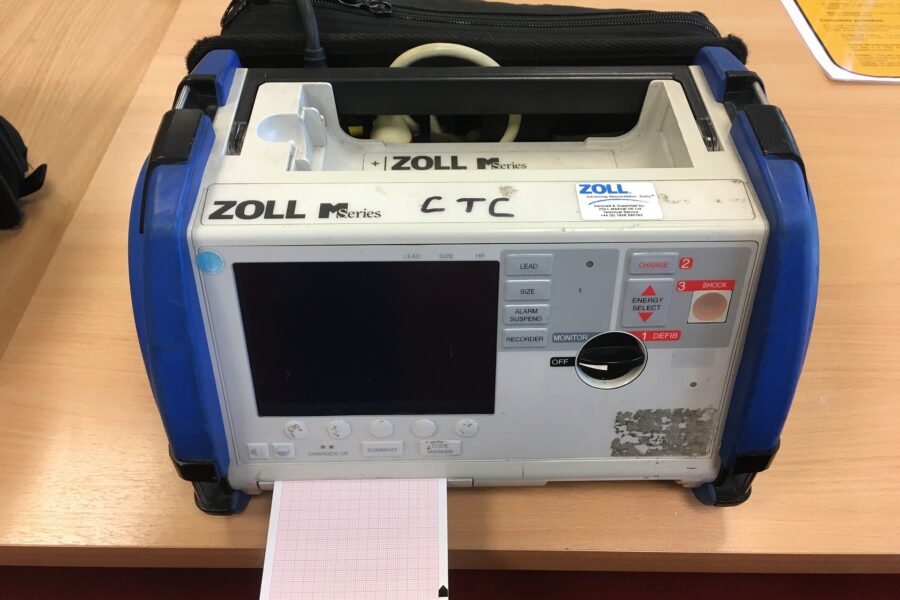How the work of two men, John Anderson & Frank Pantridge, bought us the defibrillator that saves thousands of lives every year around the world.
Who invented the defibrillator?
Many people will be familiar from TV hospital dramas with the idea of the external defibrillator shocking the heart back into rhythm: “Stand clear; kerchung, beep beep beep!” In the 1960’s Dr Frank Pantridge, at the Royal Victoria Hospital in Belfast, spotted the opportunity to improve recovery rates with early treatment at the scene of the heart attack and developed a mobile treatment facility. The first mobile defibrillator weighed 50kg and needed its own vehicle to get to the patient. Read about Professor Pantridge here.
Fast-forward to 2021 and, when he collapsed on the pitch at the Euro 2020s, Danish Footballer Christian Eriksen was treated on site with a portable automatic external defibrillator (AED). You will find AEDs now in many public places. A device costs around £1,000, weighs about 1 kg and is so intelligent it can tell a convenient bystander how to use it.
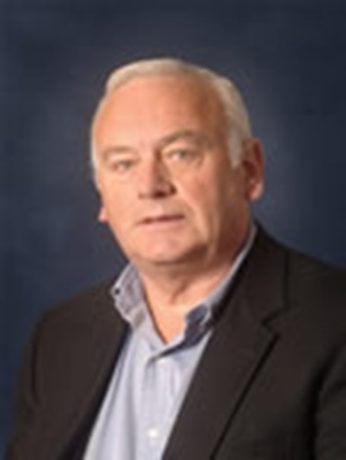
Defibrillator History Timeline
1960s
1966

1967
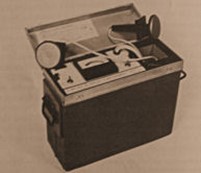
1970s
1971

1972
John Anderson’s team now addresses a new challenge – to provide mobile continuous ECG monitoring until patient arrival at the hospital, and to provide an event record for review. As a result, a new, fully integrated unit, featuring ECG display and event recording, is developed. This device weighs approximately 12 pounds. The system, known as CORA (Combined Oscilloscope & Recording Apparatus) is the first mobile system also to incorporate a speech channel track for rescuers to record comments, drug information, patient information, etc. A new “fast-scan” system also is incorporated enabling a two-hour patient record to be scanned in five minutes. The three main advantage of this system are: lightweight, continuous recording and reusable tapes.
1973
Further material advances allow for a dramatic reduction in weight, and the first truly lightweight portable defibrillator for emergency services is developed. Designed to specifications developed and prototyped at the Royal Victoria Hospital Belfast, this unit weighs approximately 7.5 pounds, significantly lighter than anything else available in the world. Six hundred units were sold in the United States alone. Professor Anderson is shown here with an early lightweight system developed in Belfast.
1980s
1980
Anderson files one of the first patents for automatic recognition of ventricular fibrillation. This algorithm, at the core of every AED in the industry today, provides the sensitivity and specificity necessary for the development of the first AEDs.
Anderson and his group spearhead design advancements that are used in current defibrillator models worldwide. A host of patents follow. Some of the “firsts” that came out of the Belfast group include:
- First mobile cardiac defibrillator
- First use of Mylar capacitors for efficiency and weight reduction
- Development of the first miniaturized capacitor, through a cooperative project with CSI, CA
- First truly portable defibrillator provided in a transport case
- One of the first rechargeable systems with integrated printer capability
- First cardiac defibrillator that could operate over a telephone system to a base station
- Patent for waveform algorithm with a defibrillator shock decision tree, elements of which are still in use in external and internal defibrillator algorithms
- Development of the first flat screen displays
- Early version tape recorder incorporated into systems for speech recording
- First IP56 (ingress test certification) and 7-year warranty in one unit
- Patented Pad-Pak™ technology, combining electrodes & lithium manganese battery in one disposable unit for simplicity of use and ease
1981
The first AED is developed in Northern Ireland. The unit includes a flat screen display, read out and recording facilities.
1990s
1998
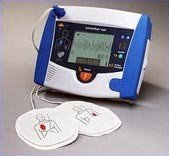
John Anderson founds HeartSine in conjunction with a group of investors to further the development of portable cardiac defibrillators based on his early Belfast experience.
2000s
2001
HeartSine develops the first samaritan AED. This device is a lightweight unit with smart battery technology, large screen display for ECG trace and graphic (with written) instructions and utilizes new SCOPE waveform technology. Audible prompts coach users in proper operation of the unit.
2004

2006
HeartSine launches the samaritan PAD 300P, with both adult and pediatric capabilities.
2010s
2010
HeartSine leads the industry by introducing an unrivalled 10 year product warranty, making the samaritan PAD the most supported AED on the market. HeartSine continues its legacy of innovation unveiling the PAD 500P with ICG based CPR Advisor for international markets. This device uses an Impedance Cardiogram (ICG) to determine if CPR is being applied hard enough and at the correct rate.
2011
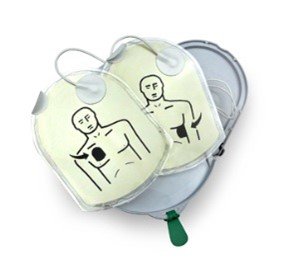
The battery capability of the innovative Pad-Pak is improved, extending its life and standard warranty to four years.
2013
HeartSine launches the samaritan PAD 350P, continuing its line of highly durable and clinically advanced AED products.
2014
HeartSine unveils the samaritan PAD 360P, the company’s new fully automatic AED.
